The Honda Prelude was more than just another two-door on the road; it was an icon that captured the heart of 90s automotive culture.
With its sleek lines, innovative features, and unmistakable presence, the Prelude stood out in a decade crowded with sporty coupes.
For many, it was the ultimate dream car—an attainable blend of performance, style, and reliability.
Yet, as the years passed, this gem quietly faded from the spotlight, overshadowed by flashier rivals and the rise of SUVs.
Today, the Prelude’s legacy deserves a fresh look.
Let’s rediscover why this forgotten favorite still turns heads and captures hearts decades later.
The 2026 Nissan Armada NISMO is set to ignite excitement in the full-size SUV segment. As the first-ever NISMO-tuned Armada, this model promises a bold leap forward in both style and performance. Enthusiasts are already buzzing about the upgrades—expect striking design cues, enhanced power, and a level of driving engagement rarely seen in this class.
With Nissan’s motorsports-inspired NISMO division lending its magic, the new Armada stands poised to challenge rivals and captivate families and thrill-seekers alike.
This isn’t just another SUV refresh—it’s the dawn of a new era for Nissan’s largest and most adventurous vehicle.
Once considered affordable daily drivers, many cars from the 2000s have transformed into today’s most desirable collector items.
What started as budget-friendly options for enthusiasts and commuters alike are now commanding staggering prices at auctions and private sales.
The nostalgia factor, limited production numbers, and rising demand have made these vehicles hot commodities.
This article takes a nostalgic and informative look at the standout models whose values have soared, exploring how and why these 2000s rides have become bank breakers in the modern car market.
Japan’s legacy in sports car manufacturing is nothing short of legendary.
While names like the Nissan GT-R and Toyota Supra dominate headlines,
a host of exceptional Japanese sports cars often slip quietly under the radar.
These hidden gems offer a fascinating blend of innovative engineering,
daring design, and pure driving excitement that rivals—and sometimes even surpasses—their famous counterparts.
In this article, we’ll uncover the overlooked models that showcase the true depth and diversity of Japan’s automotive imagination.
The folks who bring you your favorite automotive spectacular are making a big splash on Saturday, July 5, 2025—that’s when Barrett-Jackson and Gila River Resorts & Casinos host what will be the coolest pool party of the summer. Open to hotel guests and day pass ticket holders, the Pool Party serves as part of an exciting summer escapade that culminates with Barrett-Jackson’s Scottsdale Fall Auction this coming October.
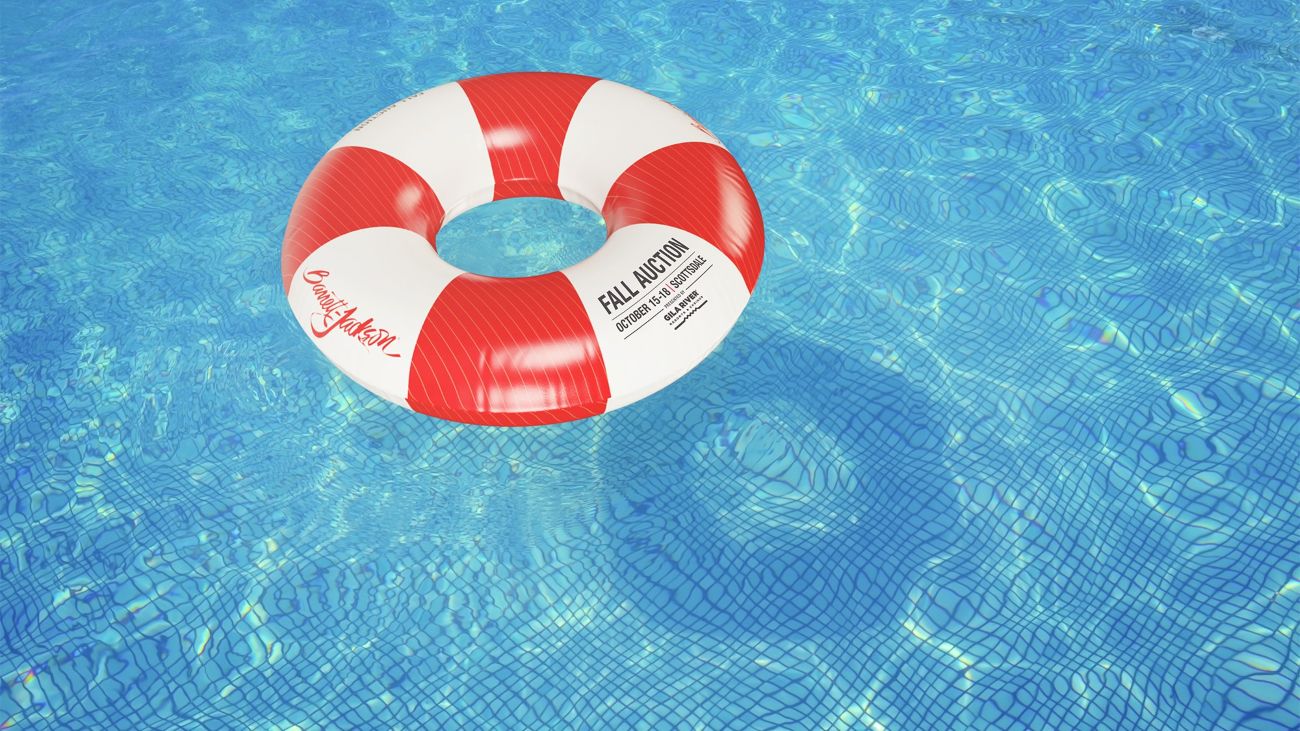
Festivities commence at noon at the Oasis Pool at Wild Horse Pass. Located a convenient 20 minutes from Phoenix’s Sky Harbor Airport, this AAA Four-Diamond-awarded hotel is a fine way to spend the long weekend celebrating the birth of America.
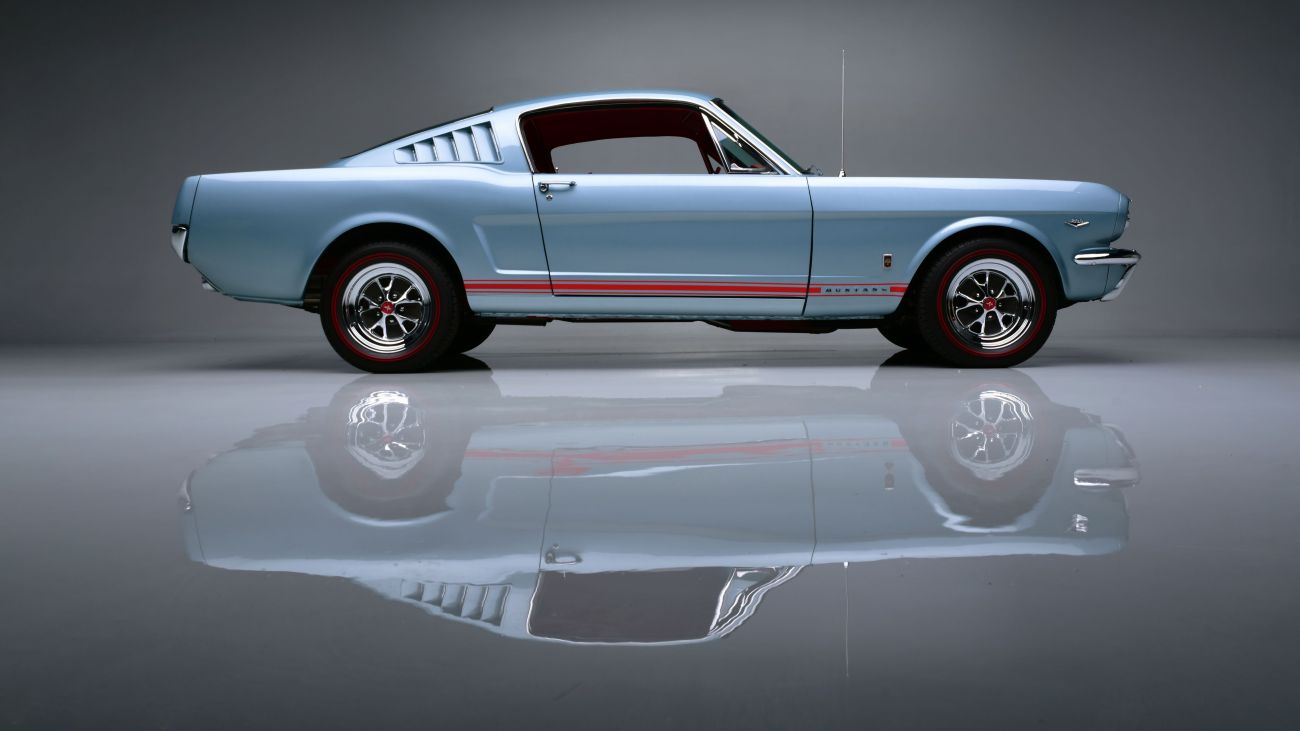
Start off with a dip in the pool while you enjoy Barrett-Jackson swag like a pool float, sunglasses, and koozie. Then, enjoy the display of collector cars straight out of the Barrett-Jackson Collection Showroom like the above Smoke Silver Mustang.
If you’re local, Pool Party day passes are available for purchase at the resort’s front desk on the day of the event. A Pool Pass is included if you book a room for the long weekend.
Although the Ford Mustang was responsible for igniting the pony car era, it wasn’t until the Chevrolet Camaro hit the market that things begin to heat up. The Camaro was a completely different beast. The lightweight vehicle was the epiphany of what a fun pony car should be, and the Camaro embodied this new generation. The Camaro is one of the longest-running nameplates in the automotive industry, and there has been a long-standing rivalry between the Mustang and the Camaro. The Camaro has remained the face of GM gearheads for the past five decades, always improving and adding new features that made the car even more exciting to drive than before.
There were also quite a few rough patches in the Camaro’s development along the way. Questionable models such as the Berlinetta came into fruition, a Camaro that was weighed down by futuristic technology and not much else. And who could forget the downright awful “Iron Duke” four-cylinder engine that was introduced in the third generation of the Camaro? Decisions like these caused the Camaro to quietly fade into the sunset for the 2002 model year. But a resurgence in popularity has made the Camaro return faster and more advanced than ever. Read on as we take a look at the past 50 years of the Camaro, and click on any image to view a full gallery of the iconic automobile.
Near the beginning of this year, I wrote a piece about the Rolls-Royce Phantom being the epitome of luxury automobiles for the past 100 years. Its lineage started with the New Phantom, a.k.a. Phantom I, which means one of the most visually distinctive Rolls-Royces ever made is also a century old: the 1925/1934 Phantom I “Round Door.”
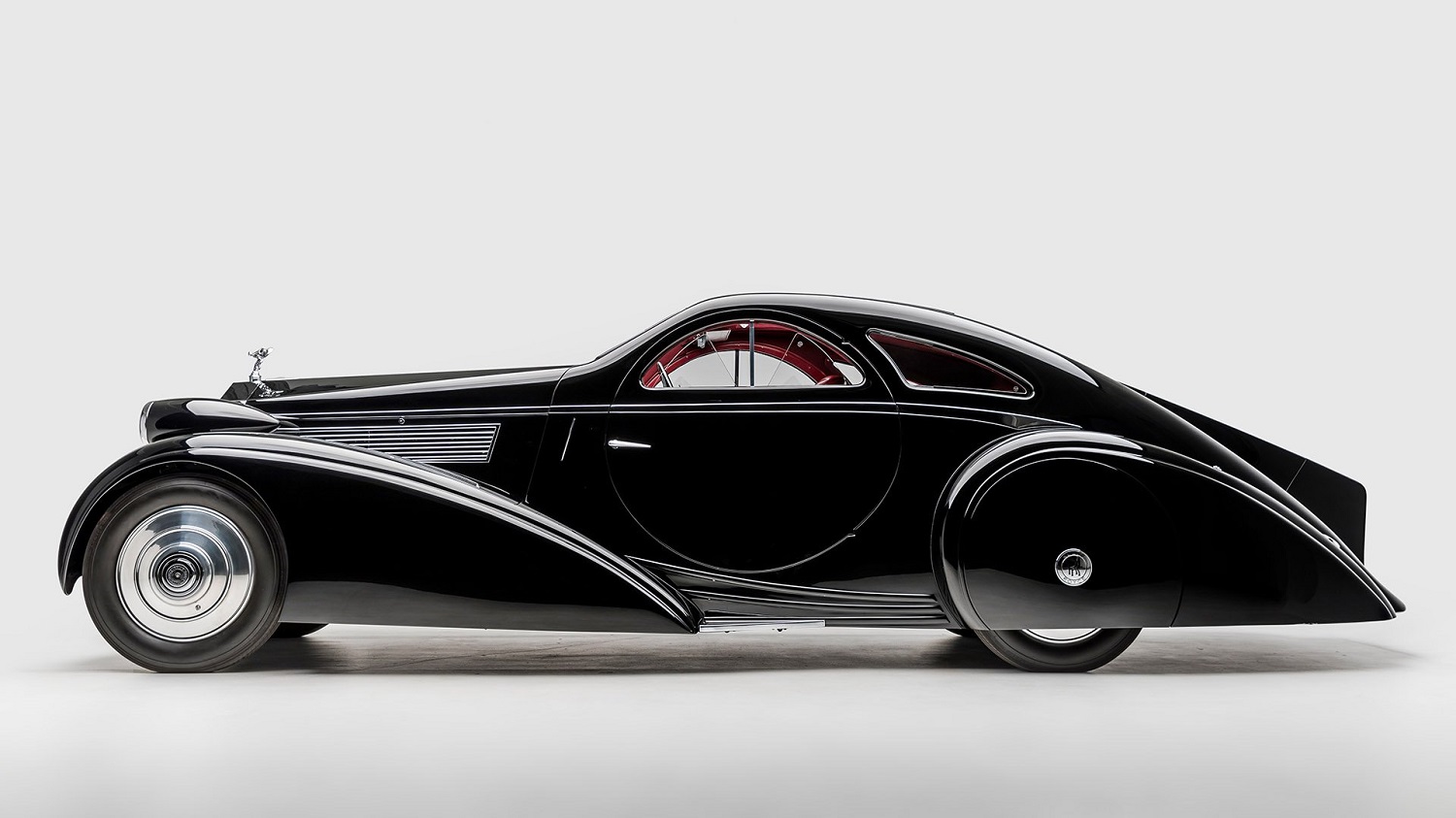
If you’re not familiar with this one-off coupe, you’re probably wondering why the Round Door is identified as both a 1925 and a 1934. Let’s just say money can buy you options.
This Rolls was originally configured with a Cabriolet body by the coachbuilders at Hooper & Co. for its first owner, Anna Thompson Dodge, the wife of Broadway and silent film actor Hugh Dillman. You might recognize her last name, which she took when she married her previous husband: Horace Elgin Dodge, a co-founder of the Dodge Brothers Company.

This Phantom was purchased by the the Raja of Nanpara in India, and then it changed hands once again, with the new owner sending it to Jonckheere in Belgium for a custom body with a sloping radiator grille cover, twin sunroofs, semicircular fender skirts, louvered rear end, side-hinged trunk cover with a prominent fin and, true to the car’s name, round doors. As neat as those doors are, perhaps what’s even cooler is the dramatic way in which the windows open.

By the 1950s, this creation was a battered heap residing in New Jersey. A subsequent owner named Max Obie had it painted gold and charged people $1 to see it within a semi trailer. Over the following decades, it spent time on the East Coast and even Japan before being acquired by the Petersen Automotive Museum in 2001 and restored.
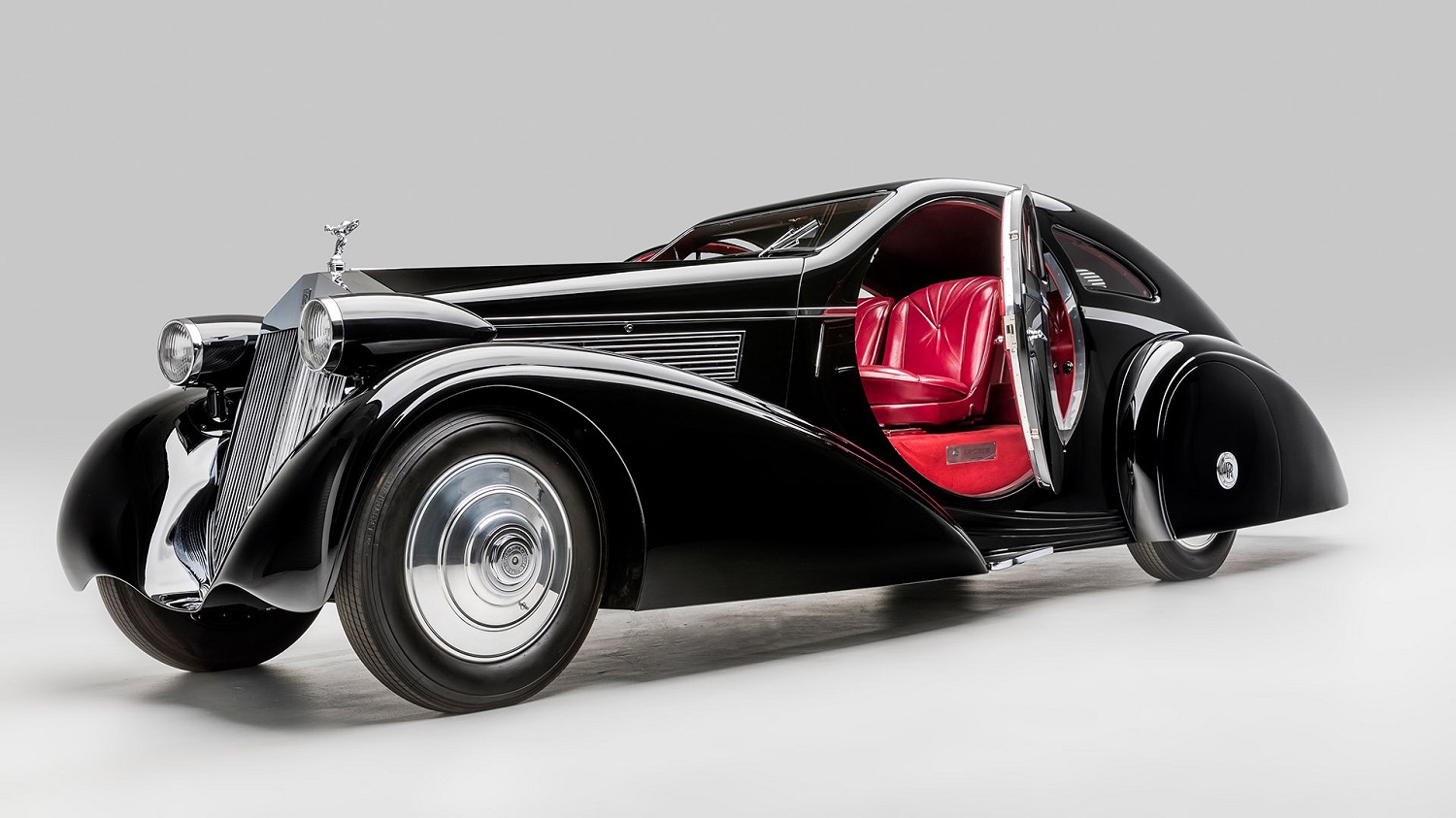
Weighing 5,600 pounds and equipped with a 7,668cc I6 that only generates 110 horsepower, the nearly 20-foot-long Rolls-Royce Round Door is not exactly easy to drive. Then again, it wasn’t meant to be a performance machine; it was built to be a show car, winning the Prix d’Honneur at the 1936 Cannes Concours d’Elegance. You might not be able to see it on the show circuit any more, but you can get an eyeful at the Petersen Automotive Museum in Los Angeles. Maybe I’ll see you there sometime because the Petersen is on my bucket list, along with the Auburn Cord Duesenberg Automobile Museum, both Packard museums, the Studebaker National Museum . . .
Few cars have earned infamy quite like the Yugo. Launched in the 1980s as a budget-friendly import from Yugoslavia, the Yugo quickly became a punchline across America and beyond. Its reputation for mechanical mishaps, awkward styling, and questionable quality cemented its place as a symbol of automotive failure.
Yet, despite—or perhaps because of—its legendary shortcomings, the Yugo remains a pop culture icon. Its legacy is a mix of mockery and nostalgia, making it impossible to forget.
Why do we still talk about the Yugo decades later? Let’s dive into the hilariously honest reasons this car is the worst ever—and why we can’t help but love it.
Today, the AutoHunter Spotlight shines on a classic pickup with some attractive cosmetic and mechanical updates: a lowered 1970 Chevrolet C10 powered by a 350ci V8 connected to a TH400 three-speed automatic. This light blue and white C/K-series truck has a black vinyl and houndstooth cloth interior, and comes from an Oregon dealership with a clear title.
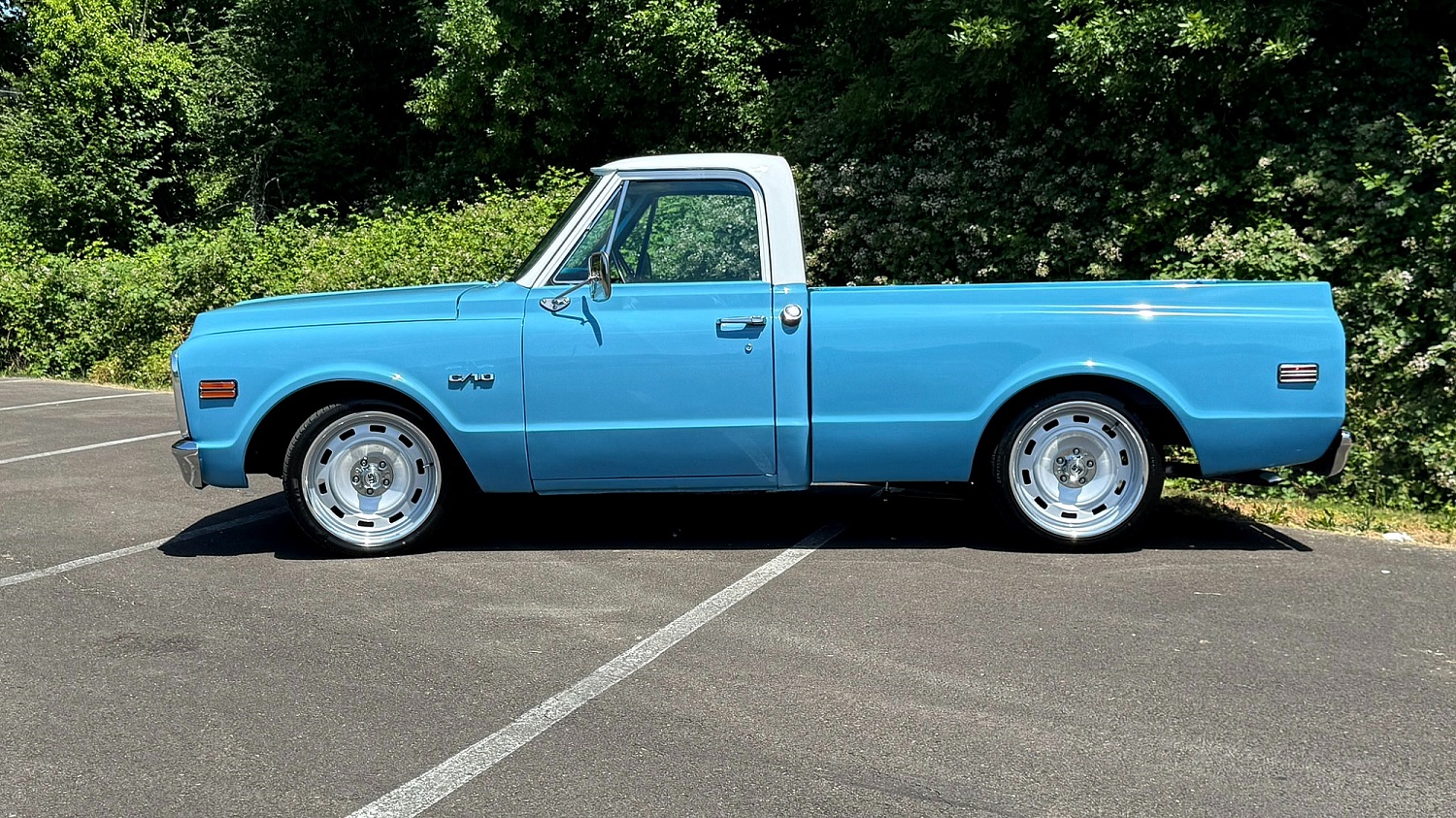
These days, classic American trucks stand out in a sea of crossovers; this short-bed C10 is especially eye-catching thanks to a bright blue body and white cab. Of course, it also has plenty of brightwork (plus a strip of woodgrain trim on the tailgate). Thanks to a Classic Performance Products lowering and handling kit, it sits three inches lower in the front and five inches lower in the back, which gives the truck a low, sporty stance on its handsome 20-inch US Mags Scottsdale wheels and new 255/35 radials.

Many trucks this age have been driven hard and it shows, but this C10’s black vinyl and black and white houndstooth cloth upholstery looks nice and fresh. The same goes for the dashboard, woodgrain trim, and carpeting. There’s even more wood on the rim of the three-spoke steering wheel, which is connected to power steering.
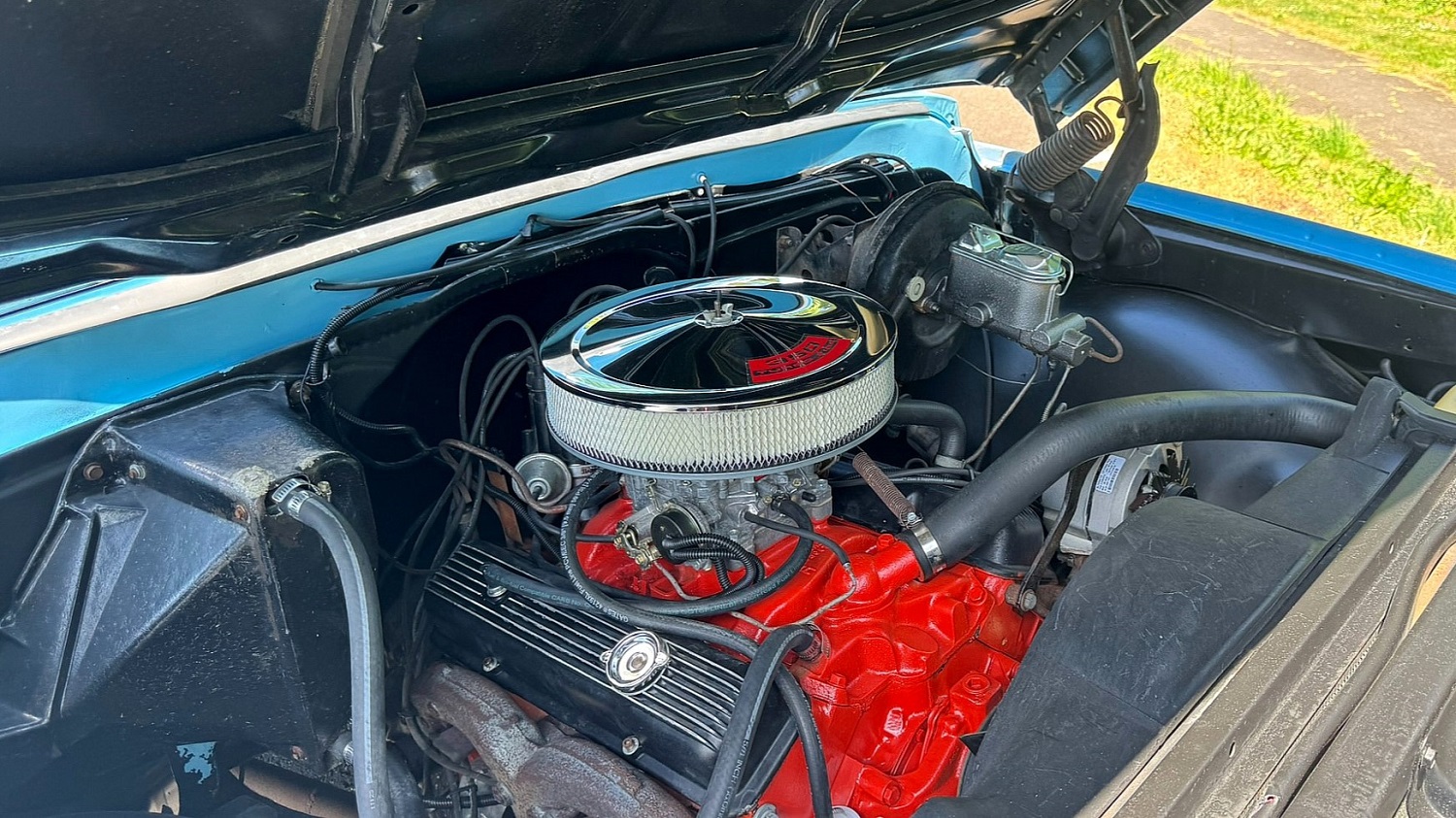
Straight-six engines used to be commonplace in pickups, but the I6 in this one has been replaced with the perennially popular 350ci V8. The engine is connected to a four-barrel carburetor, TH400 three-speed automatic, and dual exhaust system. A 3.07:1 12-bolt rear end delivers the upgraded engine’s power to the road; power front disc and rear drum brakes keep it in check.
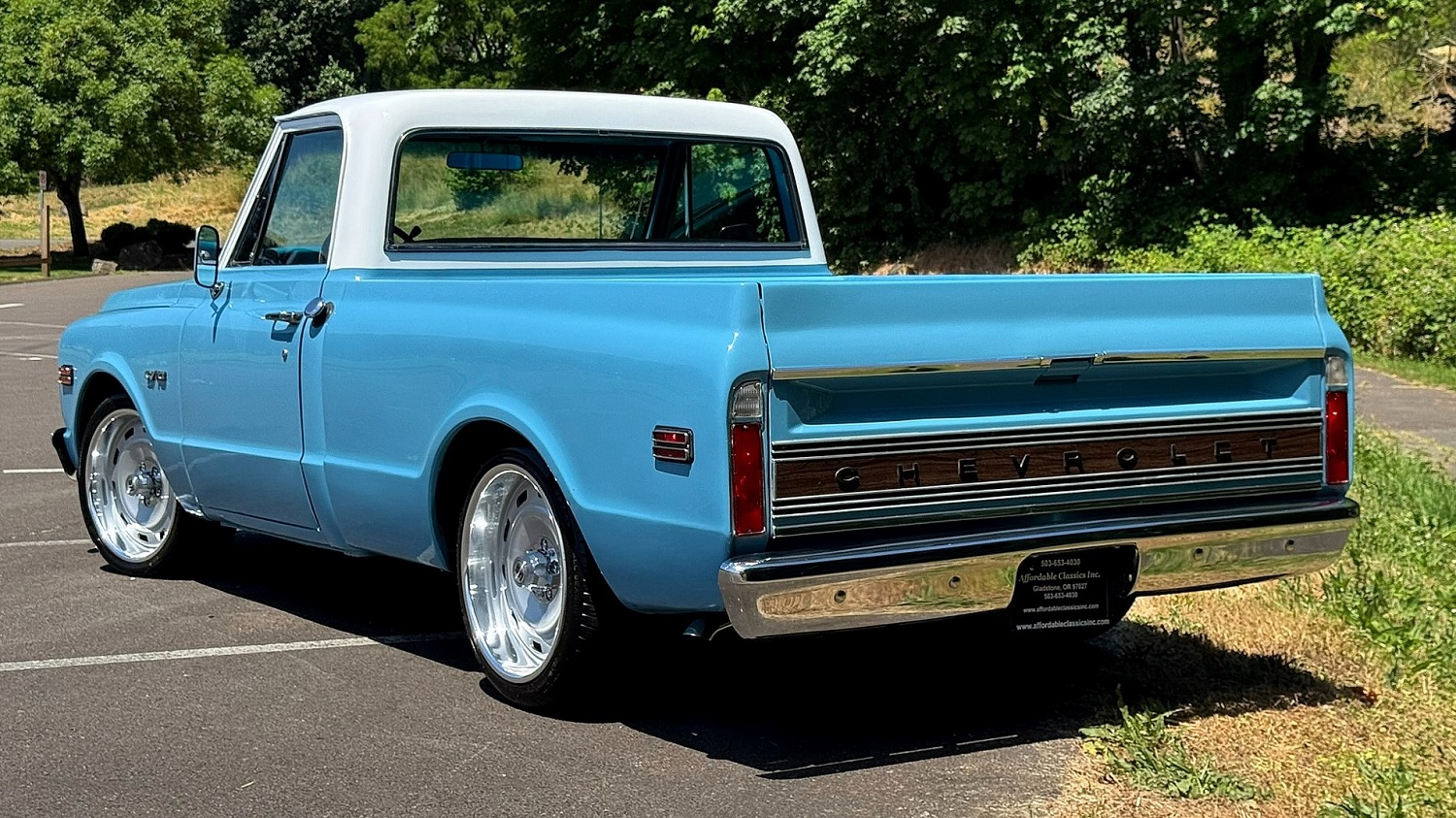
If this 1970 Chevrolet C10 is the right mix of yesteryear and modern times for you, bid on it now. The auction for it ends on Tuesday, July 1, 2025 at 12:15 p.m. (PDT).
Visit the AutoHunter listing for more information and a photo gallery
The 1960s were all about the youth market. Plenty of models that looked sporty but didn’t quite have the performance to match—witness the Mustang 2+2, AMC Marlin, Dodge Charger, and many others that looked fast but were quite the opposite in standard configuration. Our Pick of the Day is one of those vehicles that had broad appeal for the masses, though its story is a bit different. This 1970 Ford Torino SportsRoof is listed for sale on ClassicCars.com by a dealership in Sherman, Texas.
When Ford introduced its redesigned Fairlane series for 1968, there were many changes in the lineup. Gone was the bucket-seat XL and GT models, now replaced by the Torino and Torino GT; unlike for 1966-67, only the Torino GT came with bucket seats standard, with the Torino featuring a fancy bench seat instead. For the GT, there were now three body styles available, as a fastback was added to the roster.
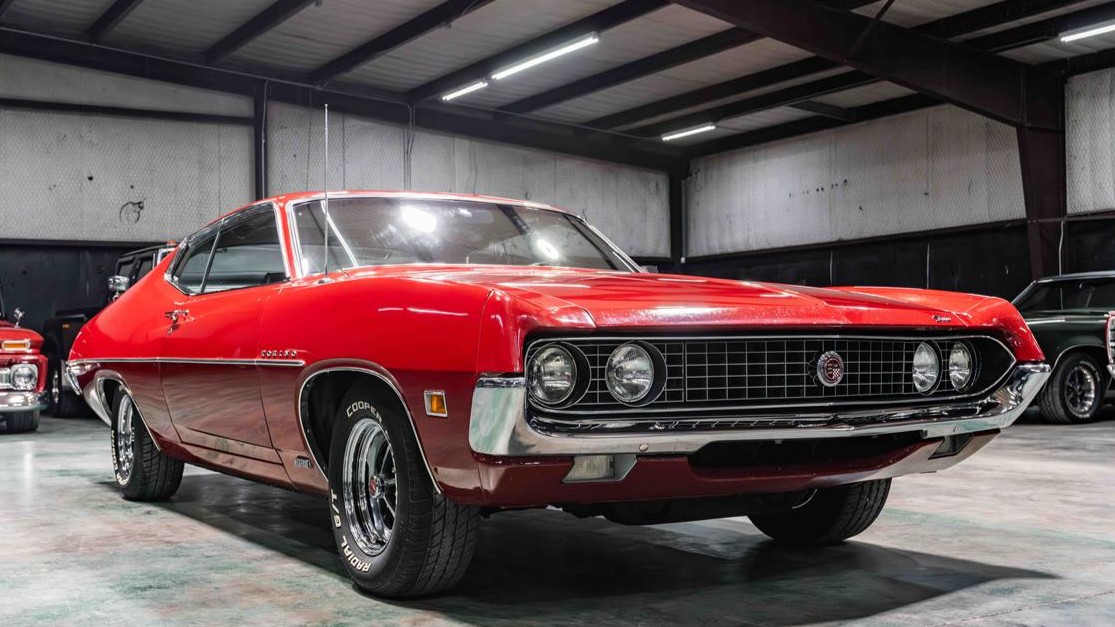
This fastback was also available as a Fairlane 500, Ford’s mid-size bread-and-butter model. It was among five ways to go, which included a two-door hardtop and convertible, four-door sedan, and wagon. The Fairlane 500 fastback was available with all engines, six and V8, including both the 390 and (starting in April) 428 Cobra Jet, though those engine were rarely ordered. And though Ford offered the Fairlane 500 fastback as a cheaper, more pedestrian alternative to the Torino GT, it was the Torino GT fastback that was the biggest seller among the whole Fairlane series by a large margin.
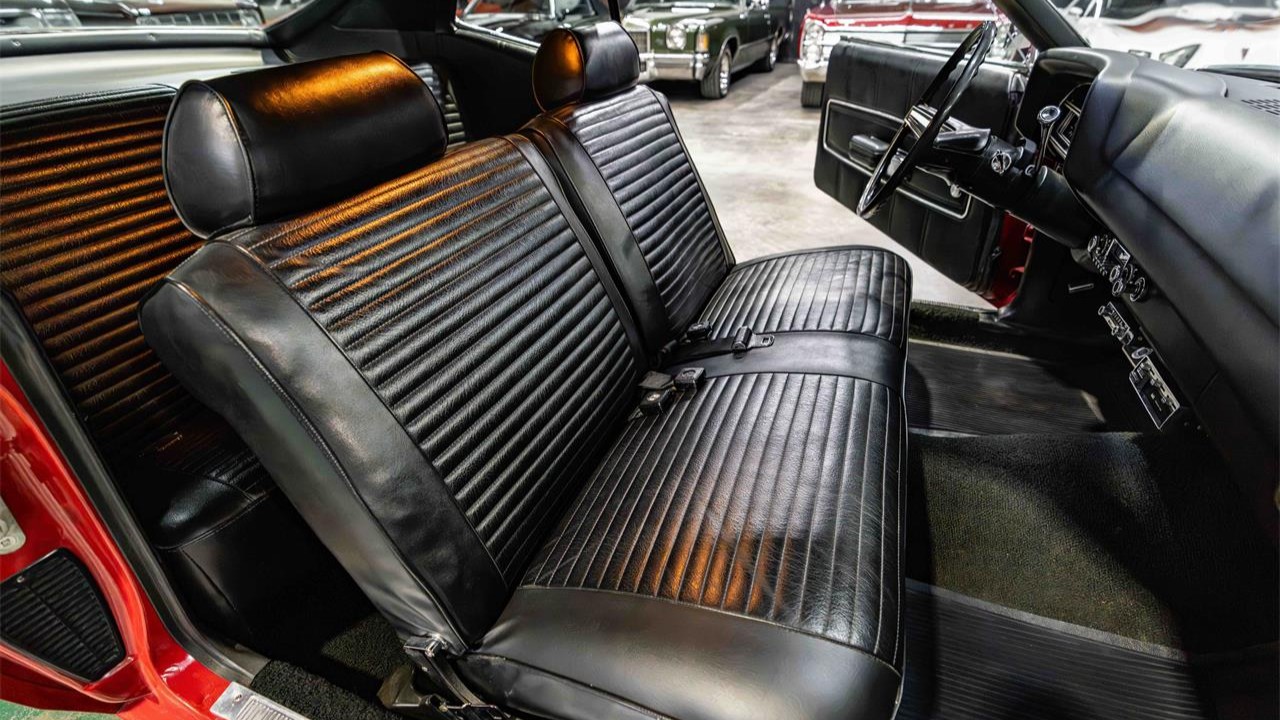
Ford’s marketing department decided to brand all fastbacks “SportsRoof” for 1969. In addition to the Torino GT and Fairlane 500 SportsRoof offerings, Ford introduced a new performance model—Cobra—which was available as a SportsRoof, making three fastbacks within the mid-size series.
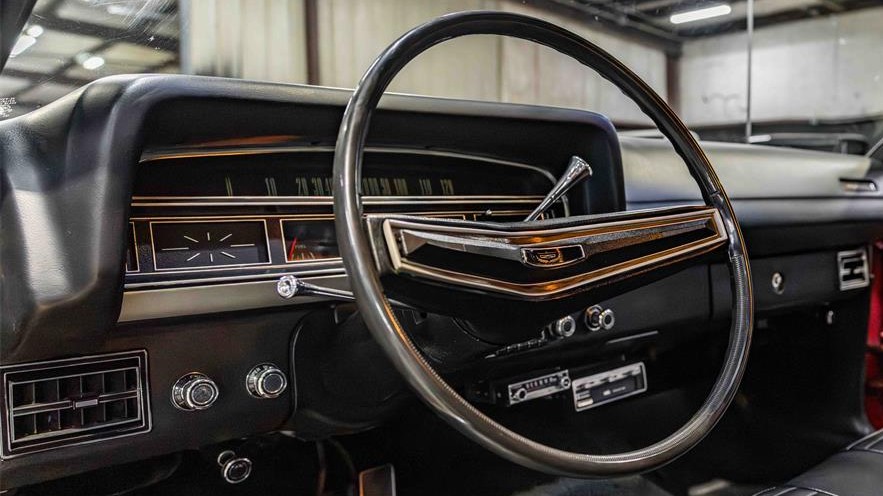
For 1970, Ford redesigned its mid-size series. Gone was the Fairlane, with the series now buttressed by the Fairlane 500 (and, come mid-year, the Falcon) and topped by the all-new Torino Brougham. The Fairlane 500 was now only available as three body styles: two-door hardtop, four-door sedan, and station wagon—no more convertible or SportsRoof. The Torino (knocked down one rung in the hierarchy) now played the bread-and-butter role among Ford’s mid-size series and offered four body styles: two-door hardtop, four-door hardtop, four-door sedan, and station wagon. There was no SportsRoof to succeed the 1969 Fairlane 500 SportsRoof when the 1970 model year debuted.
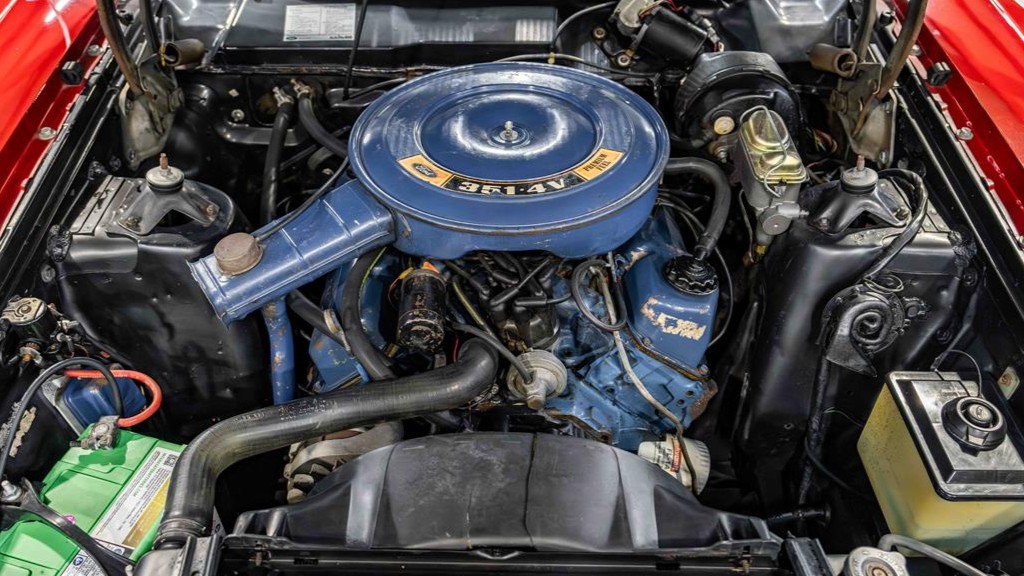
But on December 16, 1969, Ford announced the Torino SportsRoof in a Car Merchandising News Flash bulletin. “The exceptional sportsroof [sic] styling of the 1970 Torino GT and the Torino Cobra will now be available in the standard Torino series.” In another dealer item, Ford claimed “adding Torino SportsRoof to the economy segment brings this sales-marketing feature within reach of an enormous cross-section of car buyers,” touting a price $164 cheaper than a Torino GT—“a sporty alternative to offer the GT enthusiast who can’t quite afford the higher series unit.” The Torino SportsRoof had appeal to Torino GT shoppers who need a car for less money, or any sporty compact buyer (like a Mustang) who wants to move up in vehicle size but still get a sporty-looking car in the same price range.

Not many people selected the Torino SportsRoof and opted for four-barrel engines with any semblance to horsepower, but this Medium Red 1970 Torino SportsRoof was ordered with the 300-horsepower “M-code” 351-4V. This engine was on the cusp between regular consumers seeking a bit more horsepower and the first step for enthusiasts who wanted to go fast. In fact, only 631 folks opted for this 351 paired with the FMX Select-Shift Cruise-O-Matic. In addition to the engine, this Torino features the optional 3.25 axle ratio, F70x14 belted whitewall tires, power front disc brakes, AM radio, tinted glass all-around, and argent Styled Steel wheels (one of 109 so equipped, according to Marti Auto Works). Note the lack of power steering! Seller claims 99,467 miles on this unusual Blue Oval. Judging by the pictures, the interior has been changed from the Black cloth and vinyl bench seat to all-vinyl, and the wheels are now Magnum 500s. Other observations include the addition of an FM tuner and 8-track tape player.
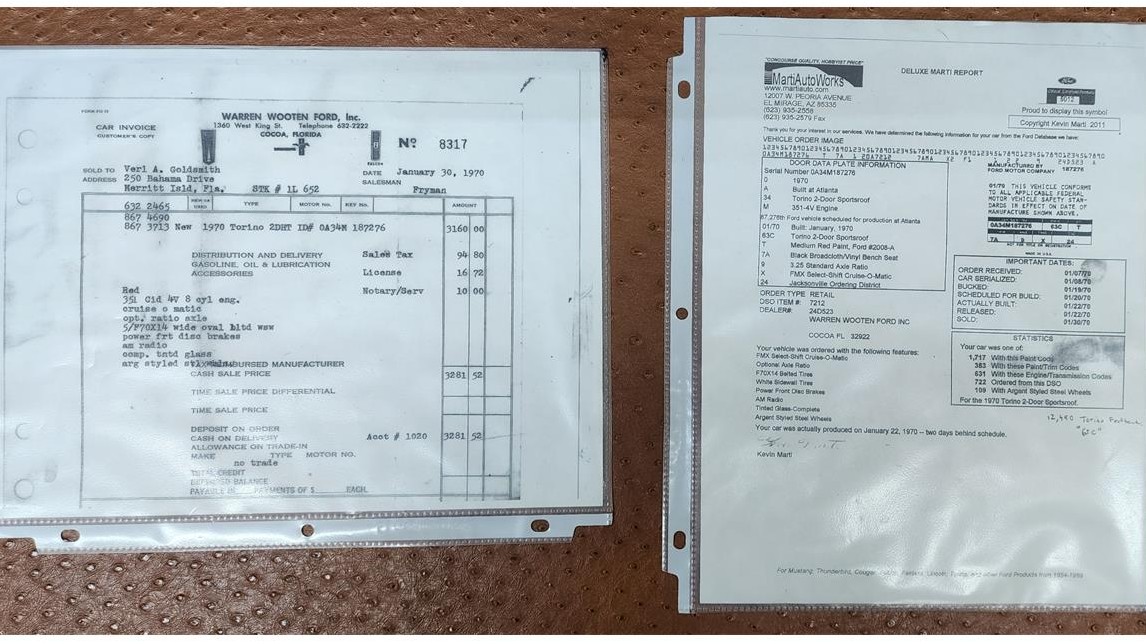
If you’re a regular guy or gal who tends to fall under the bell curve of life but whose automotive whims fall under the fringes, then this $28,500 Ford checks all the boxes.
Click here to view this Pick of the Day on ClassicCars.com
